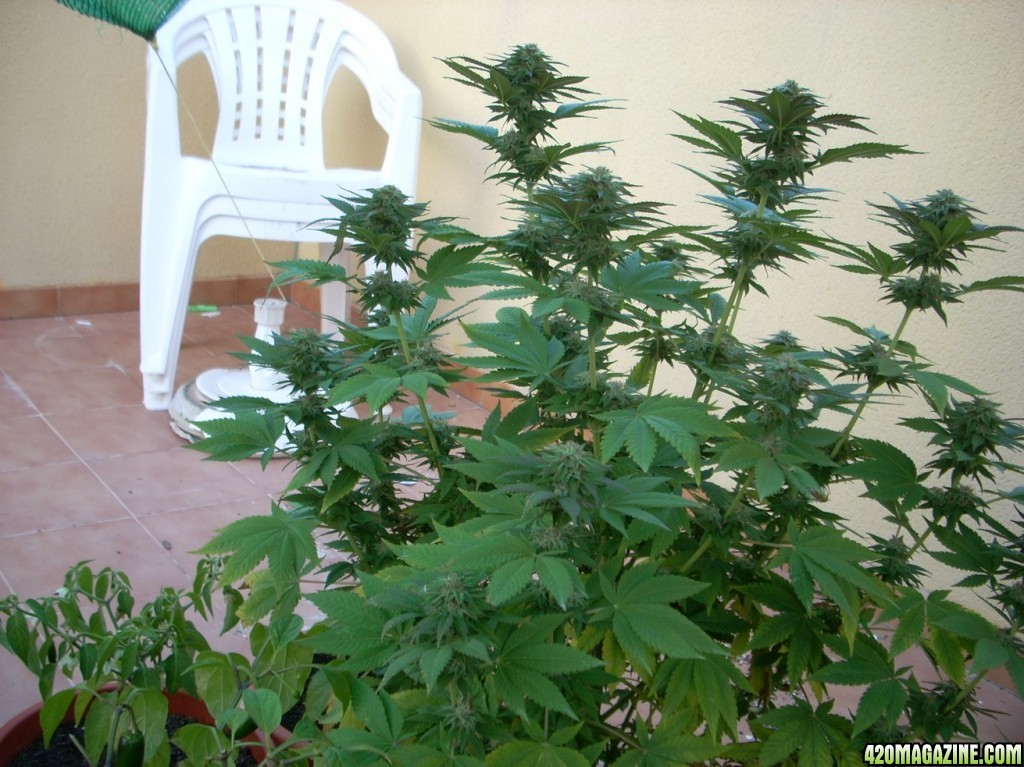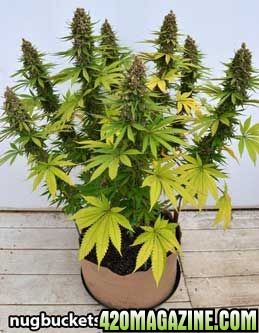I am vegging in a greenhouse and for flowering we put plants up on our sun-roof. This is already our 5th or so harvest, but I am less than overwhelmed with the number and size of the buds. See picture.

This one is "Somango" feminized. As far as I remember my wife even topped it at some point.
It should be in week 6 or 7 of flowering.
What you see is all those branches and "ok" sized buds on the top, but the rest of the branches all those small and dainty "buds" if you see what I mean.
My question is...WHY?
(I am feeding organic with Plant Magic Oldtimer nutes).
There are some explanations:
* Those pots we use for those grows are WAY too small, this maybe the reason why the branches don't get many LARGE buds?
* There is not enough sun light currently (I mean it's December) to have them grow many LARGE buds?
* It's the strain, the yield is simply not that great?
We had similar harvests in the last weeks but those last few ones are all like that with branches with less than impressive buds.
Here is an example (not mine) how I'd like them to be:

Nice, big buds along the branches. Not some dinky little buds like ours have.
Anyone know why?
This one is "Somango" feminized. As far as I remember my wife even topped it at some point.
It should be in week 6 or 7 of flowering.
What you see is all those branches and "ok" sized buds on the top, but the rest of the branches all those small and dainty "buds" if you see what I mean.
My question is...WHY?
(I am feeding organic with Plant Magic Oldtimer nutes).
There are some explanations:
* Those pots we use for those grows are WAY too small, this maybe the reason why the branches don't get many LARGE buds?
* There is not enough sun light currently (I mean it's December) to have them grow many LARGE buds?
* It's the strain, the yield is simply not that great?
We had similar harvests in the last weeks but those last few ones are all like that with branches with less than impressive buds.
Here is an example (not mine) how I'd like them to be:

Nice, big buds along the branches. Not some dinky little buds like ours have.
Anyone know why?




 These techniques are usually for advanced growers, but it's not that difficult to do. If you follow what I said precisely, your genetically small budz will not only be bigger (resin glands the size of grapes) but the trichome production will be ridiculous.
These techniques are usually for advanced growers, but it's not that difficult to do. If you follow what I said precisely, your genetically small budz will not only be bigger (resin glands the size of grapes) but the trichome production will be ridiculous. 


